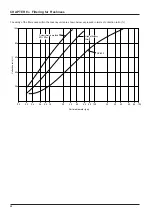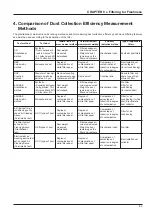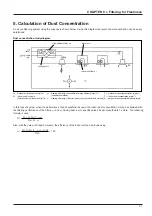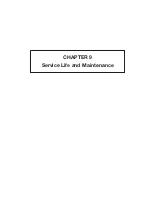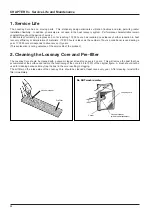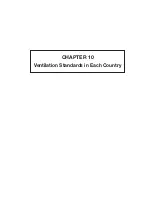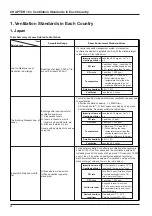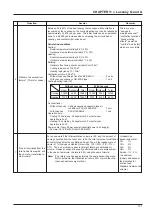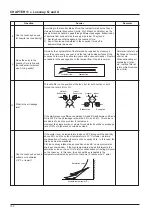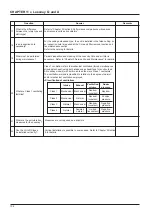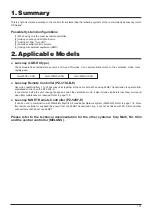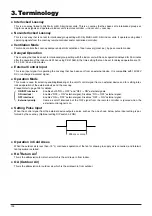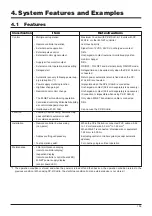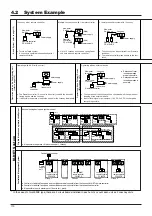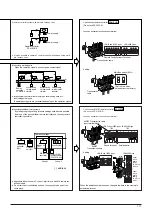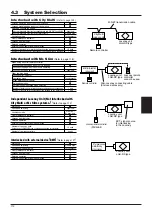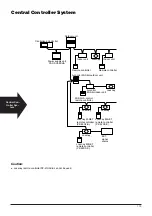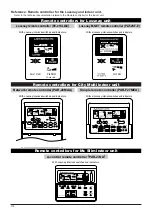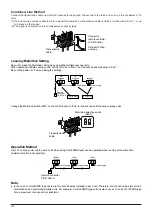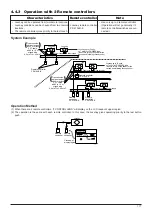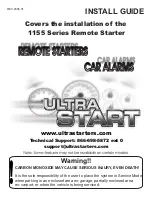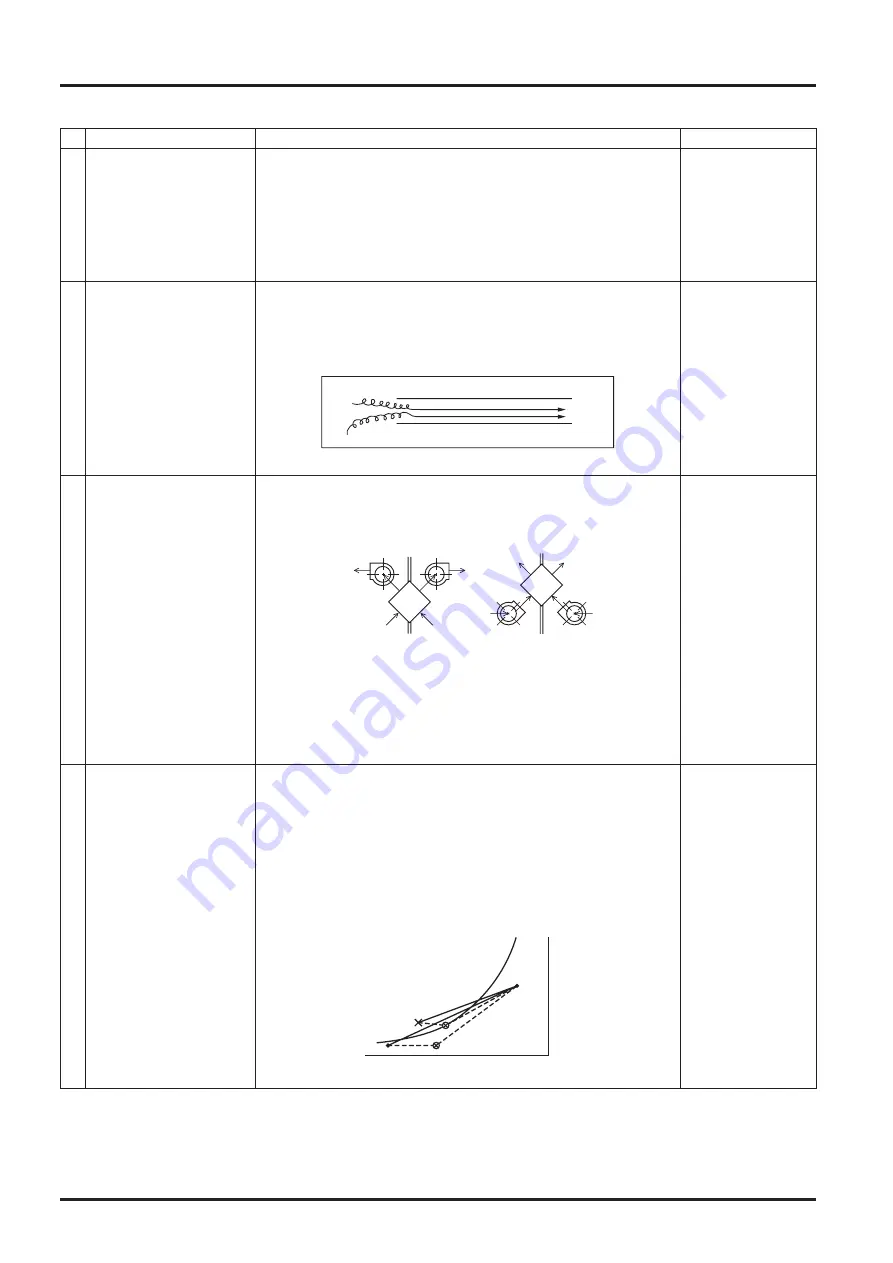
According to the results obtained from the test performed by the Tokyo
University Hospital (Inspection Centre, Prof. Kihachiro Shimizu), as the
supply air and exhaust air pass through different passages, transmission
of bacteria from exhaust side to supply side is low. They found:
1) Bacteria does not propagate in the Lossnay Core.
2) Even if bacteria accumulated in the Lossnay, it died off in
approximately two weeks.
Normally, the original state of the filter can be regained by cleaning it
more than once every one year, and the two intake side surfaces of the
Lossnay Core more than once two years with a vacuum cleaner. Dust will
not adhere in the passage due to the laminar flow if the air is normal.
This will differ on the position of the fans, but for both suction or both
forced, the rate is 2% to 3%.
If the static pressure difference between SA and RA and between EA and
OA is 500 Pa, the air leakage rate will be 2.5%, and 3.4%. This value is
considered to be of no problem for actual use.
However, the single suction or single forced methods will have a leakage
rate of 10% or higher and should be avoided.
If the winter room air temperature is above 20°C along with the humidity
above 50%, and the outdoor temperature is -10°C or lower, moisture
condensation or frosting will occur on the Lossnay Core. In this case, the
intake air must be preheated.
Plot the Lossnay intake side air conditions A and B on a psychrometric
chart as shown below. If the high temperature side air B intersects the
saturation curve such as at C, moisture condensation or frosting will occur
on the Lossnay. In this case, the air should be preheated to the
temperature indicated by point A’ so that point C reaches the C’ point.
102
CHAPTER 11
●
Lossnay Q and A
Question
Answer
Remarks
8
Can the Lossnay be used
for hospital air conditioning?
Since the entry to the
9
Lossnay Core is fine and
the incident air turbulent,
won’t it clog easily?
10
What is the air leakage
rate?
Can the Lossnay be used in
11
extreme cold climates
(-10°C or lower)?
Normal air refers to air
that does not contain
oil mist, etc.
When exhausting air
containing oil mist,
etc., install a filter at
return grille to remove
the oil mist.
A
A’
C
B
C’
Lossnay
EA
OA
RA
SA
Lossnay
EA
OA
RA
SA
Turbulent flow
Laminar floe
Outdoor
Exhaust fan
Indoor
Supply fan
Exhaust fan
Supply fan
Outdoor
Indoor
Dry bulb temperature (°C)
Absolute humidity (kg/kg’)
Saturation curve
Summary of Contents for Lossnay PZ-41SLB-E
Page 4: ...CHAPTER 1 Ventilation for Healthy Living Lossnay Unit ...
Page 17: ......
Page 18: ...CHAPTER 2 Lossnay Construction and Principle ...
Page 24: ...CHAPTER 3 General Technical Considerations ...
Page 41: ......
Page 42: ...CHAPTER 4 Characteristics ...
Page 56: ...53 CHAPTER 4 Characteristics ...
Page 57: ...54 CHAPTER 4 Characteristics ...
Page 59: ......
Page 60: ...CHAPTER 5 System Design Recommendations ...
Page 68: ...CHAPTER 6 Examples of Lossnay Applications ...
Page 83: ......
Page 84: ...CHAPTER 7 Installation Considerations ...
Page 88: ...CHAPTER 8 Filtering for Freshness ...
Page 96: ...CHAPTER 9 Service Life and Maintenance ...
Page 98: ...CHAPTER 10 Ventilation Standards in Each Country ...
Page 101: ......
Page 102: ...CHAPTER 11 Lossnay Q and A ...
Page 108: ...Lossnay Remote Controller ...
Page 109: ......
Page 197: ...MEMO ...
Page 198: ...Y04 002 Jul 2004 MEE ...

